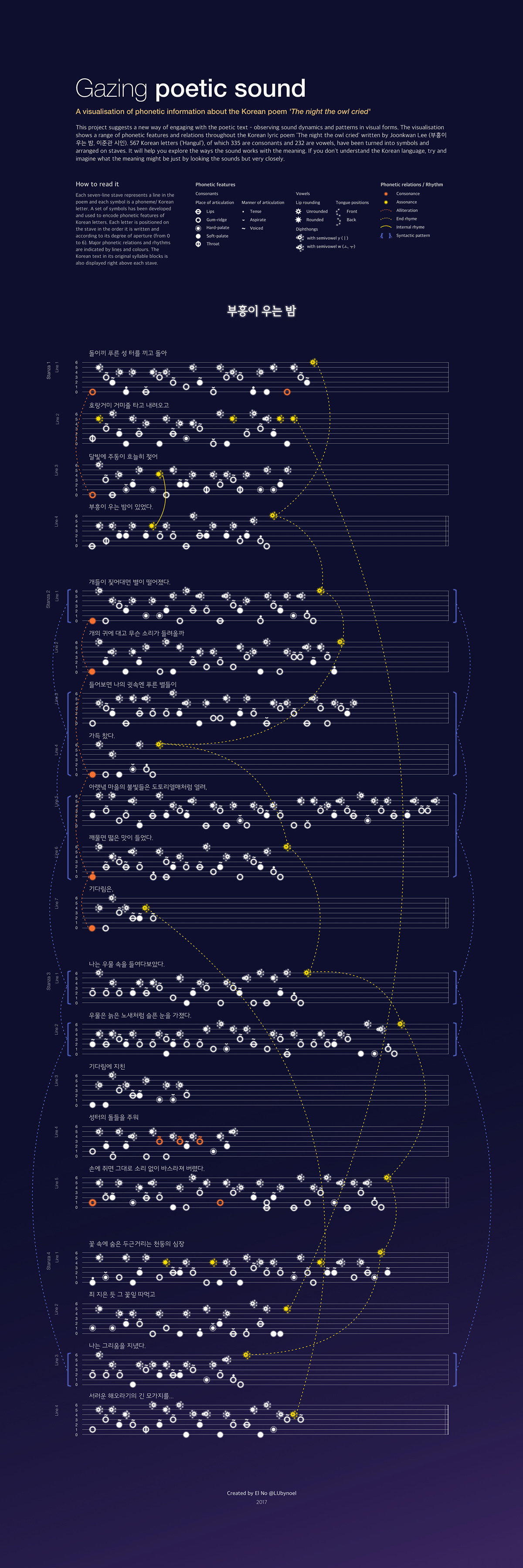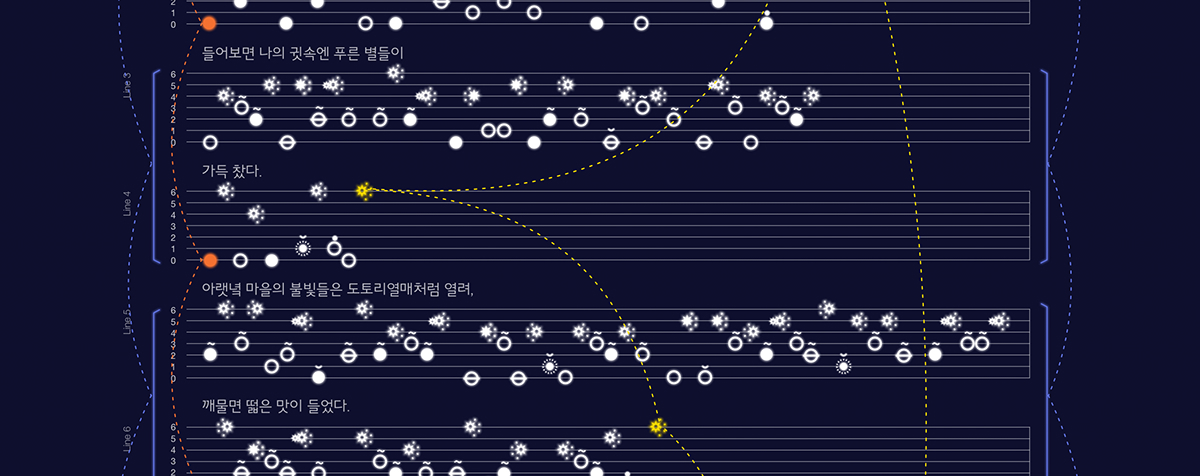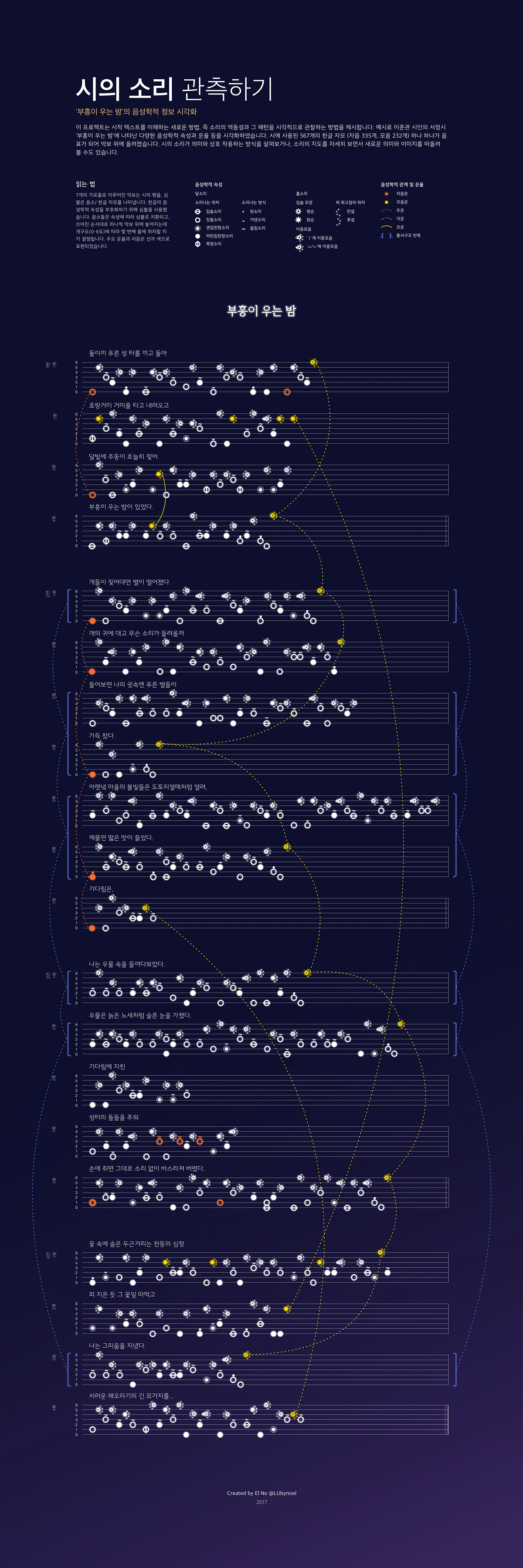Gazing poetic sound
A visualisation of phonetic information about the Korean poem 'The night the owl cried'
Language has two aspects - sound and meaning, and yet we don't tend to care about sound as much as we care about its meaning when using language. This project attempts to draw attention to sound features of the language by visually mapping phonetic qualities of the certain written text. A poem has been chosen to be visualised because of the fact that poetry is the literary form where the sound is highly relevant. In poetry, sound is an important source of poetic potency and is deliberately chosen and arranged to reinforce or to undercut meaning.
The output suggests a new way of engaging with the poetic text - observing sound dynamics and patterns in visual forms. It shows a range of phonetic features and relations throughout the Korean lyric poem 'The night the owl cried' written by Joonkwan Lee (부흥이 우는 밤, 이준관 시인). 567 Korean letters ('Hangul'), of which 335 are consonants and 232 are vowels, have been turned into custom symbols and arranged on staves. The visualisation will let you explore the ways the sound works with the meaning. If you don't understand the Korean language, try and imagine what the meaning might be just by looking at the sounds but really closely.

A set of symbols has been developed to visually encode a range of phonetic features of all Korean letters (Hangul) - 29 consonants and 11 vowels. The design of symbols is largely inspired by music notations and stars. This is to reflect the musicality of poetry and the images and the emotions conveyed through this particular poem.

The original Korean text is also displayed right above each stave. In Korean writing, 2 or 3 letters are combined to form a syllable block (and then a word) rather than each letter is written side by side horizontally as in English. So the letters were firstly re-arranged horizontally for phonetic analysis and also the visualisation.


Sketches and notes.





In celebration of the upcoming Hangul Day on 9th October, created Korean version as well.

Inspired by the paper
A. Abdul-Rahman and et al. (2013). Rule-based visual mappings–with a case study on poetry visualization. Computer Graphics Forum, 32, 381–390 (Read here)
Created by El No
Twitter: @LUbynoel


